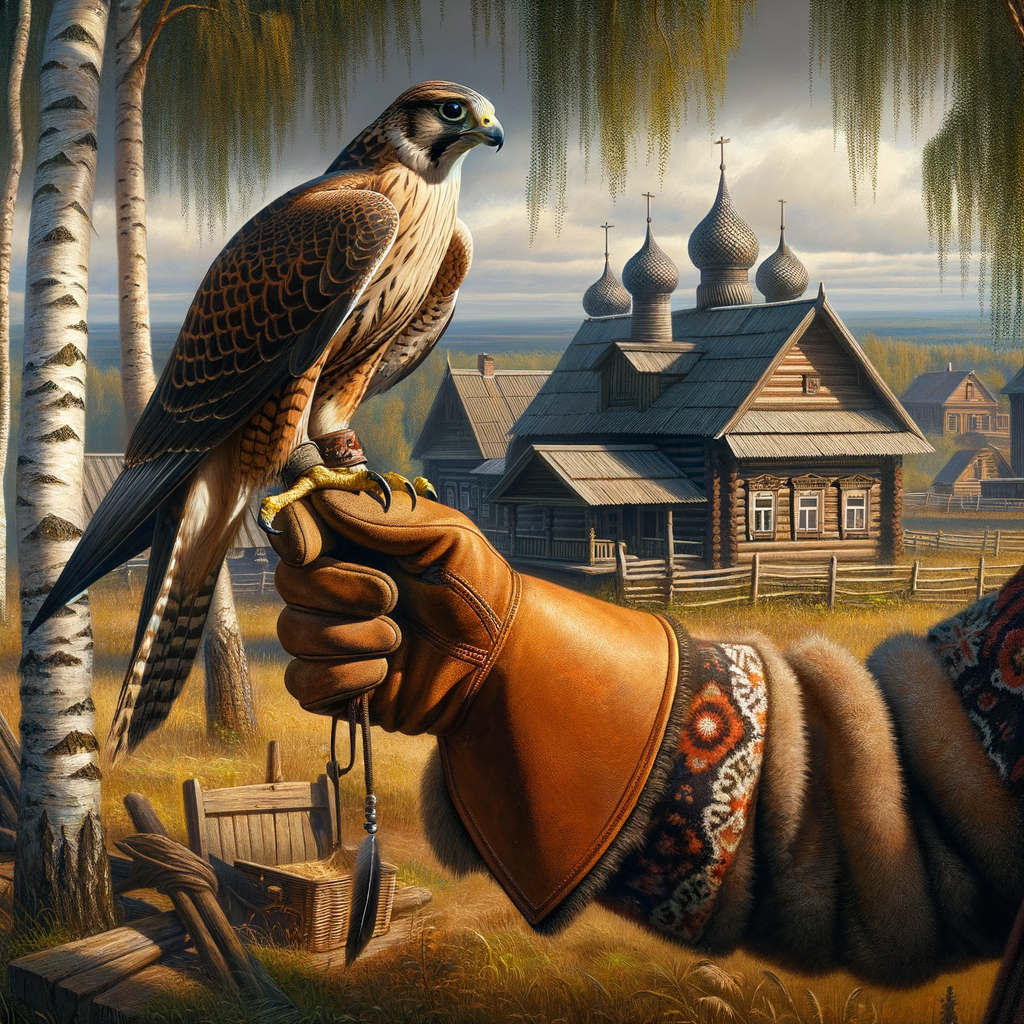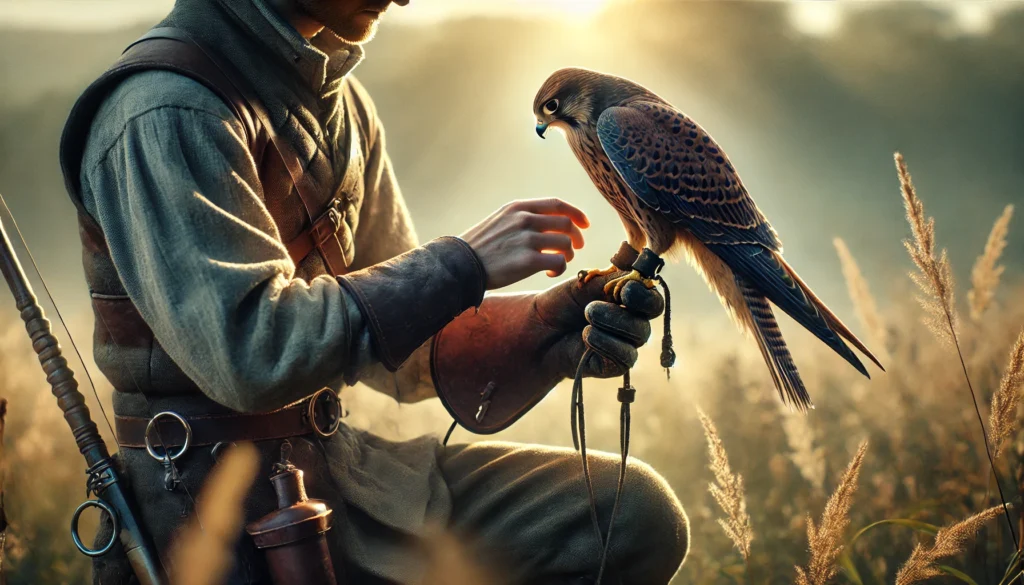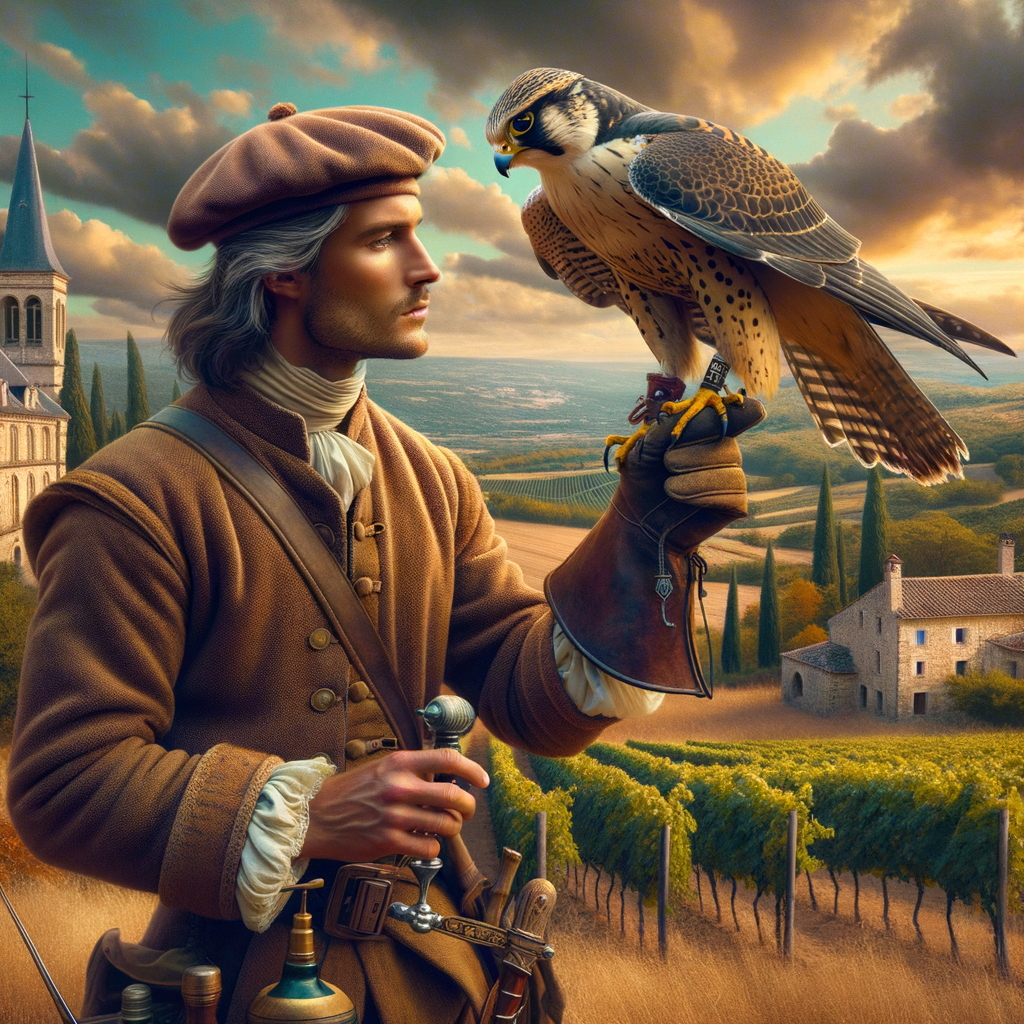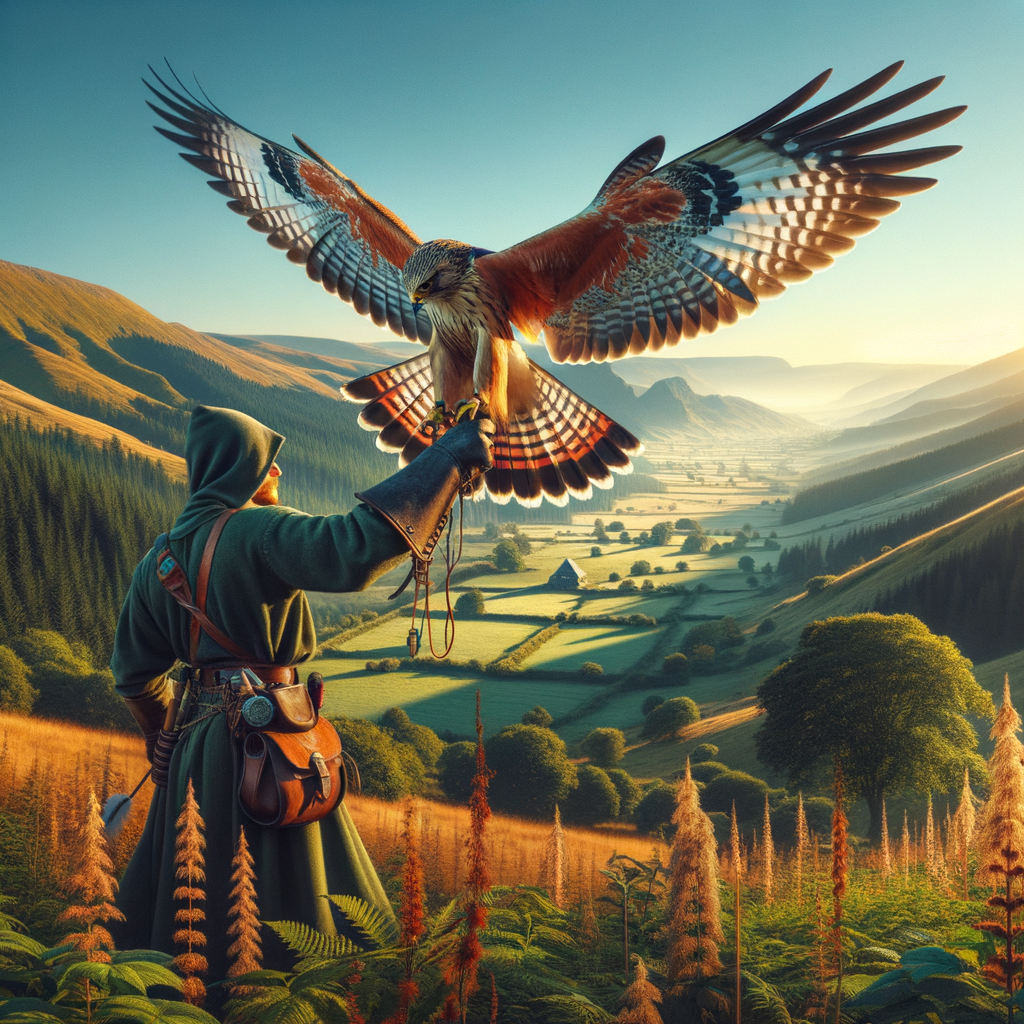Falconry in Russian Culture
Ancient Tradition: Falconry in Russia dates back centuries and is deeply rooted in the country’s history and culture.
Royal Pastime: Historically, falconry was a popular sport among Russian nobility and royalty, showcasing wealth and status.
Cultural Symbol: Falcons have been symbols of power, freedom, and nobility in Russian folklore and literature.
Skill and Patience: Falconry requires significant skills and patience, including training birds of prey and understanding their behavior.
Modern Practices: Today, falconry is still practiced in Russia, blending ancient traditions with modern techniques.
Conservation Efforts: Falconry contributes to wildlife conservation, helping to protect and maintain bird of prey populations.
Educational Role: Falonry provides educational opportunities, teaching about wildlife, nature, and the environment.
Community and Tradition: Practicing falconry fosters a sense of community among enthusiasts and helps preserve an important cultural heritage.
Global Influence: Falconry in Russia has influenced and been influenced by falconry practices from other regions around the world.
By learning about falconry, we can appreciate its rich heritage and understand its importance in Russian culture today.
Discovering Falconry in Russian Culture: A Journey as Unique as an Irish Folktale
Here at Learn Falconry, where we inspire and teach the ancient and regal sport of falconry, we’re thrilled to take you on a mesmerizing adventure into Russian culture and its deep-rooted passion for this majestic tradition. Imagine this: just as Ireland is known for its enchanting folktales that captivate listeners young and old, Russia has its own equally captivating tales’but these stories revolve around the noble art of falconry.
Falconry in Russia is more than just a technique; it’s a window into the country’s soul, history, and identity. From the snowy expanses of Siberia to the bustling cities, the bond between humans and these magnificent birds of prey has shaped Russian culture in ways that are truly magical. This isn’t just dry history’it’s a living, breathing connection that still resonates today.
So, grab a warm cup of tea, cozy up, and join us on this extraordinary ride. You’ll discover how falconry is not just a sport but a cultural tapestry that weaves together tradition, nobility, and the splendor of the Russian wilderness. Ready to dive deeper into this enchanting world? Keep reading to uncover the stories and secrets that make Russian falconry a truly special experience.
The Fascinating World of Russian Falconry Traditions
Falconry, the ancient art of hunting with birds of prey, plays a big and important role in many cultures, including Russia. In this article, we’ll dive into the rich history and unique practices of Russian falconry. By exploring various aspects of this cultural heritage, we’ll learn why falconry in Russia has remained a beloved tradition for centuries.
Origins of Falconry in Russia
Russian falconry has roots that stretch back many centuries. Just like in other parts of the world, falconry in the former Soviet Union was not just a hunting method but also a symbol of status and skill. The art of training and hunting with falcons was passed down through generations, creating a legacy that is still honored today.
To understand more about the ancient origins of falconry, you can visit History of Falconry – Ancient Origins.
Unique Russian Falconry Techniques
Falconry in Russia includes some unique techniques that differentiate it from other traditions. For instance, Russian falconers often use specific types of falcons like the Saker falcon and the Gyrfalcon, prized for their strength and hunting prowess. These birds are trained using methods that have been refined over many generations.
For a deeper dive into these techniques, check out Advanced Falconry Techniques.
The Role of Falconry in Russian Culture
In Russian culture, falconry has always held a place of great importance. It is seen in literature, art, and historical texts, underscoring its significance. From the medieval times when royalty and nobles practiced falconry to the modern day, Russian falconry traditions continue to be a symbol of national pride.
You can explore more about the role of falconry in different cultures at Falconry in Cultures.
Falconry in the Former Soviet Union
During the era of the former Soviet Union, the practice of falconry faced changes but remained a cherished tradition. Despite various challenges, including legal regulations and modern changes, the passion for falconry persisted among enthusiasts.
Learn more about how legal aspects affected falconry in this region by visiting Legal Aspects of Falconry.
Preservation of Russian Falconry Traditions
The preservation of Russian falconry traditions is crucial for future generations. Organizations and clubs in Russia are working hard to keep these traditions alive. They conduct training programs, competitions, and awareness campaigns to ensure that the skills and knowledge of falconry continue to be passed down.
Find out more about how falconry is preserved and celebrated in other cultures at Preservation of Falconry Traditions.
Conclusion
The rich history and enduring traditions of Russian falconry are a testament to the deep connection between humans and birds of prey. Whether learning about the various species involved, such as the Gyrfalcon and the Saker falcon, or exploring the role of falconry in different cultures, the world of Russian falconry offers endless fascination.
Internal Links for More Information
To further delve into the rich world of falconry, consider the following resources:
Russian Falconry in the Modern Age
Falconry has been an important practice in Russia for many centuries, with a rich history tied to culture and conservation. This tradition continues to thrive in 2024, with various initiatives and events dedicated to preserving and celebrating the art of falconry.
Falconry Events
2nd Falcon Day International Forum
- Date: September 3, 2024
- Location: 9th Eastern Economic Forum, Vladivostok, Russia
Focus Areas:
- Preserving and bolstering falcon populations, including gyrfalcons, peregrine falcons, and saker falcons.
- Strategic measures for conservation.
Falcon Exchange at Milotice Castle
- Date: July 13, 2024
- Location: Milotice Castle, Czech Republic
Features:
- Bird exchange and other activities.
| Event | Date | Key Highlights |
|---|---|---|
| 2nd Falcon Day International Forum | September 3, 2024 | Conservation of gyrfalcons, peregrine falcons, and saker falcons |
| Falcon Exchange at Milotice Castle | July 13, 2024 | Bird exchange, sales tent |
Conservation Efforts
The Russian government is taking significant steps to preserve different falcon species.
Key Initiatives
- Strategic Measures: Implementing strategies for conserving gyrfalcons and peregrine falcons.
- Ecology National Project: Part of the âConservation of Biological Diversity and Development of Ecological Tourism’ federal project.
Key Projects and Schedules
- Kamchatka Falconry Centre: Opened in 2022, this center has successfully hatched its first birdling and is expected to continue breeding rare birds of prey.
Auctions and Funding
- Proceeds from auctions at the 2nd Falcon Day International Forum will support falcon reintroduction and conservation centers, ecological tourism, and research.
Breeding and Reintroduction
Auction Details
- Over 30 gyrfalcons, saker falcons, and peregrine falcons to be auctioned.
- Proceeds to support population recovery programs.
| Bird Species | Auctioned Birds |
|---|---|
| Gyrfalcons | 10 |
| Saker Falcons | 10 |
| Peregrine Falcons | 10 |
International Cooperation
Key Participants
- Representatives from Russia, China, Kyrgyzstan, Kazakhstan, Mongolia, and the UAE to sign a declaration on the conservation of the gyrfalcon population.
Cultural Exchange
- The forum will feature traditional Bedouin tents and Arabic coffee and sweets, enhancing the multicultural experience of falconry enthusiasts.
Ecological Tourism
Cultural Program
- A city-wide festival dedicated to falconry.
“Far East Street” Exhibition
- Showcasing live trained birds of prey.
- Providing information on falcon conservation efforts.
| Activity | Description |
|---|---|
| Cultural Program | Features traditional Bedouin tents and Arabic treats |
| “Far East Street” Exhibition | Live trained birds of prey, conservation information |
Falconry in Russia is not just a hobby; it’s an integral part of cultural heritage and modern conservation efforts. Through strategic initiatives, international cooperation, and dedication to ecological tourism, Russia is committed to ensuring the survival and thriving of these majestic birds for generations to come.
Reflecting on Russian Falconry Traditions
As we delve into the rich culture of falconry in Russia, it’s clear that 2024 marks a significant year for conservation and ecological efforts. The 2nd Falcon Day International Forum in Vladivostok, on September 3, 2024, stands out as a vital event, focusing on preserving gyrfalcons, peregrine falcons, and saker falcons. These efforts, spearheaded by the government and supported by strategic conservation measures, highlight the country’s commitment to protecting and celebrating its avian heritage.
Breeding and reintroduction programs also play a critical role in these initiatives. An auction, featuring over 30 falcons, aims to support population recovery programs, ensuring these majestic birds continue to thrive. International cooperation further bolsters these efforts, with delegates from various countries working together on projects that span conservation and eco-tourism.
The Kamchatka Falconry Centre, pivotal for breeding rare birds, exemplifies the progress made in recent years. With successful hatching and ongoing development, this center is part of a broader plan to establish reintroduction and conservation hubs across Russia.
In essence, the dedication to falconry reflects a blend of cultural pride and forward-thinking initiatives, contributing to the long-term survival of these remarkable birds. By engaging with local and international communities, Russia continues to lead in the preservation of falconry traditions while adapting to modern conservation needs.



